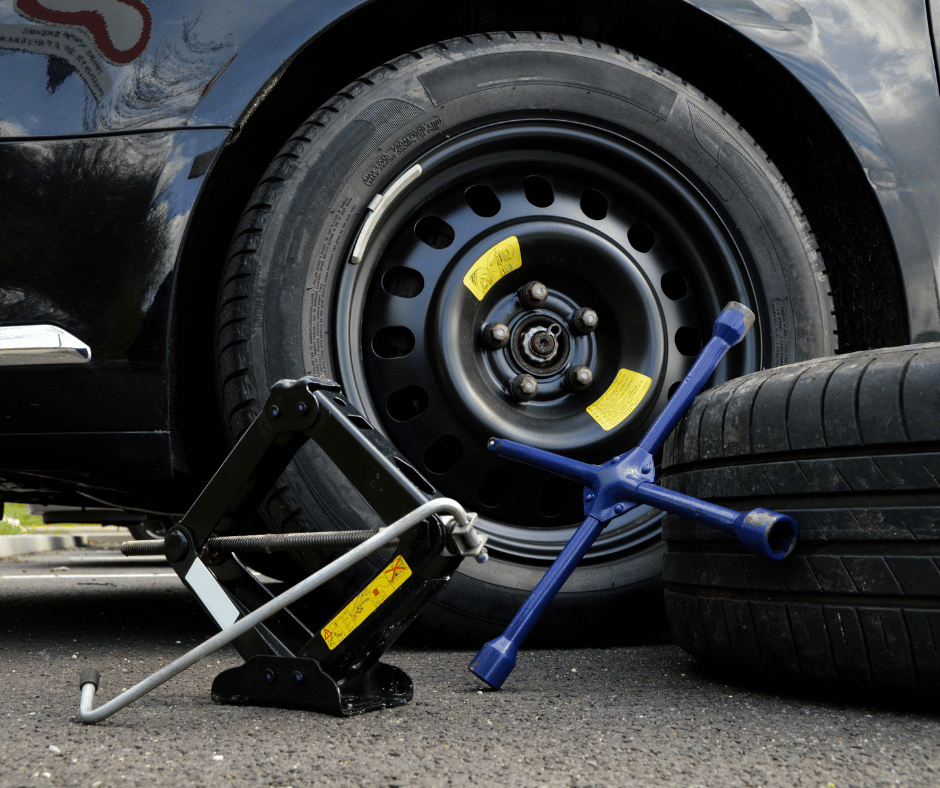There’s nothing like a flat tire to disrupt a smooth journey. This guide, brought to you by Newnan Towing Services, offers essential insights into handling this common roadside hiccup. Whether you’re a seasoned driver or new behind the wheel, understanding how to manage a flat tire is crucial for your safety and convenience. We’ll walk you through the causes, the necessary tools, and the steps to safely change a tire, ensuring you’re prepared for this common road challenge.
Understanding the Causes of Flat Tires
Why do flat tires happen when you least expect them? Several factors contribute to this unwelcome surprise. From sharp objects on the road to wear and tear, knowing the causes helps prevent future occurrences. Regular checks and understanding tire health are your first line of defense against flat tires. Understand the various factors, like temperature changes and valve stem issues, that can lead to tire troubles.
Preparation: Tools and Safety Gear for a Roadside Tire Change
Being prepared can turn a tire change from a crisis into a manageable situation. Essential tools include a jack, lug wrench, and a fully inflated spare tire. Don’t forget safety gear like reflective triangles and a safety vest. These tools not only make the process smoother but also ensure your safety during the change. Additionally, keeping a flashlight and a pair of gloves in your vehicle can be invaluable, especially for unexpected nighttime tire changes.
Step-by-Step Guide to Changing a Tire
Changing a tire need not be a daunting task. By following these simple steps, you can ensure a smooth and safe tire change:
- Find a Safe Location: Locate a flat, stable surface away from traffic to ensure safety while changing the tire.
- Engage Parking Brake: Always engage your parking brake before starting the tire change process to stabilize your vehicle.
- Loosen Lug Nuts: Before jacking up the car, slightly loosen the lug nuts with a wrench, making them easier to remove later.
- Jack Up the Vehicle: Position the jack under the vehicle at the specified lifting point and raise the car until the tire is off the ground.
- Remove the Tire: Take off the loosened lug nuts completely, then remove the flat tire from the hub.
- Mount the Spare Tire: Place the spare tire on the hub and screw the lug nuts on it by hand before lowering the car.
- Tighten Lug Nuts: Lower the car and then tighten the lug nuts in a star pattern using the wrench, ensuring the tire is securely attached.
After completing these steps, you’ll have successfully changed your tire and be ready to continue your journey. Remember to check the spare tire’s pressure and tighten the lug nuts again after a short distance.
Common Mistakes to Avoid During a Tire Change
Even with the best intentions, mistakes can happen. Avoid common errors like changing a tire on an incline or using a faulty jack. Not tightening the lug nuts in a star pattern can also lead to issues. Awareness of these pitfalls is key to a successful tire change. Overlooking the importance of a stable surface or ignoring the condition of your spare tire are also mistakes that can complicate the process.
When to Call for Professional Help: Recognizing Complex Tire Issues
Sometimes, a tire change isn’t a DIY job. If you’re facing issues like a stuck lug nut or an unsafe location, it’s time to call the professionals. Newnan Towing Services is always ready to assist you with complex or risky situations, ensuring your safety and getting you back on the road swiftly. Our team is trained to handle a variety of tire-related issues, including those that may seem insurmountable on the roadside.
Maintaining Your Tires: Tips from Newnan Experts
Proper tire maintenance is key to preventing flats and ensuring a safe driving experience:
- Regular Pressure Checks: Check your tire pressure monthly, including the spare, to ensure they are at the optimal level.
- Inspect for Wear and Tear: Regularly examine your tires for signs of wear, cuts, or objects embedded in the tread.
- Rotate Your Tires: Follow your vehicle’s recommendation on tire rotation to ensure even tire wear.
- Balancing and Alignment: Have your tires balanced and wheel alignment checked periodically for optimal performance.
- Avoid Overloading: Adhere to your vehicle’s recommended load capacity to prevent excessive tire stress.
- Mindful Driving Habits: Avoiding harsh acceleration, braking, and steering helps reduce tire wear.
By following these tips from Newnan’s tire experts, you can extend the life of your tires and enhance your vehicle’s safety and performance. Remember, well-maintained tires are less likely to fail and can save you money in the long run.
Contact Us for Flat Tire Change Assistance
Navigating the challenges of a roadside tire change is easier with the right knowledge and preparation. At Newnan Towing Services, we’re dedicated to ensuring your safety and convenience on the road. Our guide provides you with all the necessary information and steps for handling flat tires with confidence. Whether it’s a simple tire swap or a more complex issue, we’re here to get you back on the road safely and efficiently. Reach out to us for expert help and experience stress-free roadside assistance.
